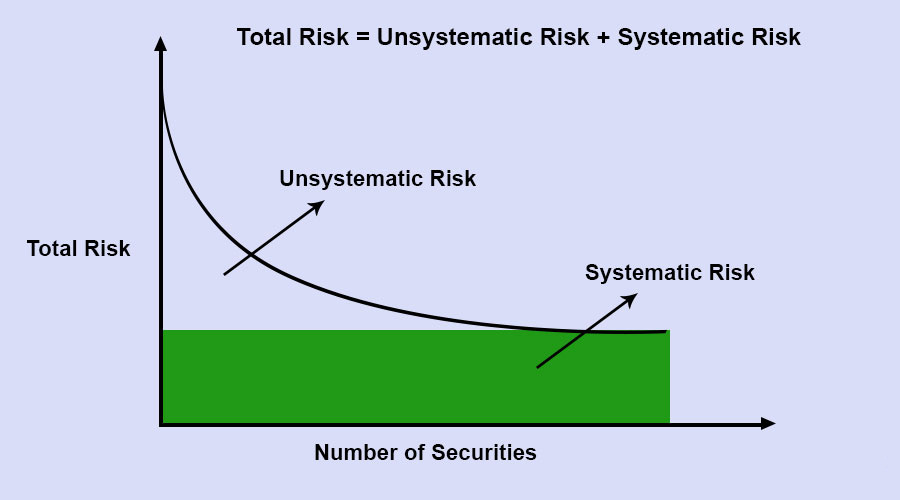A Study for Indian Organized Apparel Retail Business
Influence of Experiential Marketing on Customers Apparel Purchase: A Study for Indian Organized Apparel Retail Business
Sushil Raturi /Volume 13/Issue 2/(April September 2020)
ABSTRACT
With the entry of multiple global brands and homegrown brands in India, the apparel retail business has started feeling stringent competition. This competition is in acquiring the customers, retaining them and keeping them loyal. This calls for innovative ways to keep the customer base intact on one hand and acquire new customer segments through business innovativeness. The retailers have realized that customer while shopping looks for something more than tangible. This something more is in the form of intangibles that can be offered to customer which will give them uniqueness to their business model. The customer experiential model is one such innovative ingredient in their business model which will not only help the retailers to acquire customers, encourage them to re-purchase, turn them into loyal customer and eventually aspire to make the customers their brand advocates. The word Experiential According to Pine and Gilmore (1999) experiential marketing can be used as a communication tool and has been growing with companies as companies found it to be a competitive tool to counter competitors. This argument was also supported by Kotler (2003) .Researchers have conducted multiple studies on Experiential marketing and their affect on consumer buying behaviour with respect to fast moving consumer goods, consumer durables, luxury goods and services; but in the absence of research on relationship between experiential marketing and customer purchase for apparel business in Indian context; there is a gap of knowledge. Through this paper, the author attempted to fill this knowledge gap as it studied the influence of experiential marketing on customer purchase for apparel business in India. The data of 950 respondents were analyzed in this research. The results from the study concluded that escapist and esthetics experience have significant positive influence on the customer purchase while the entertainment and educational experience were not found to have significant positive influence on the purchase of the customer.
Keywords : Experiential Marketing, educational experience, entertainment experience, escapist
1.0 INTRODUCTION
In the year 1982, Holbrook and Hirschman were the first to introduce experiential marketing concept under the domain of consumer buying behaviour.
Pine and Gilmore (1999) carried forward the study on experiential marketing and stated
that this form will emerge as a new strategic tool to stay ahead of the competitors. Kotler (2003) also pointed out the importance of
1. Sushil Raturi, PhD, Professor, Dept of Fashion Management Studies, National Institute of Fashion Technology, Mumbai, India modern marketing over traditional marketing. In all these studies, experiential marketing emerged as a revolutionary marketing strategy and a strategy for future. Various researchers have defined customer experience as an experience that excites, ignites and dazzles customers. Schmitt (1999), one of the pioneers in the area of experiential marketing stated that experience created using sense, feel, think, act and relate
enhances customer experience. This finding was further studied and tested by various researchers in different part of world for different products and services. These studies have also brought out relationship between various components of experiential marketing and purchase.
On the basis of available literature, it has been observed that there is a lack of research in establishing relationships between various components of experiential marketing as given by Pine & Gilmore and purchase of apparel in Indian context for apparel business. The Indian retailers have acknowledged the importance of experiential marketing and thus would like to understand impact of various components of experiential marketing on customer purchase. Thus, a need was felt to undertake a study with the objective mentioned below.
2.0 RESEARCH OBJECTIVES
To study the influence of various forms of experiences (as defined by Pine & Gilmore) on customer purchase decisions of apparel.
3.0 LITERATURE REVIEW
The literature review in the paper brings out two aspects: a. Concept of Experiential marketing b. Pine & Gilmore model of experiential marketing
4.0 CONCEPT OF EXPERIENTIAL MARKETING
According to Schmitt (2000), experience is the events that occur in response to stimulation (e.g created by the efforts before and after the purchase). Experience is often the result of direct observation or participation of activities - good activities in reality, fantasy and virtual. Thus a marketer does not have to focus on individual experience alone but switched on strategic thinking about the type - the type who want to experience what is provided and how to provide it with a high degree of appeal (Schmitt, 2000). According to Pine and Gilmore (1999) the use of experiential marketing as a communication tool is growing with companies as they believe that it provides a competitive advantage in comparison to traditional communication. This was also supported by Kotler (2003).
The work of Holbrook and Hirschman (1982) on experiential marketing was carried forward by Taranto (1998) through his research on brand experience where he pointed that events are increasingly being used to change perceptions and build relationships. Through these live brand experiences the consumers foster an emotional attachment and create a relationship with the brand. Pine and Gilmore (1999) in his book on “Welcome to the experience economy” explained experiential marketing as a strategic concept and emphasized that mere experience will not give brands competitive edge ; the experience should be special which gives customers unforgettable memories. These types of experiences and memories will not only attract customers but will also influence customer purchase.
Wood (2009) attempted to find out reason for growth of experiential marketing and stated the reasons as: firstly, the over use of traditional media and therefore the need to do something unique from competitors; secondly, the consumer’s desire for novelty, individualism; and thirdly, the need to build an emotional attachment to brands which cannot be differentiated on the basis of their functionality.
An in-depth work in the area of experiential marketing was done by Schmitt (1999) and brought out different components of experiences: sensory experiences (sense), emotional or affectionate experiences (feel), creative cognitive experiences (think), physical experiences (act) and social-identity experiences (relate). The sensory experience iscreated through sight, sound, touch, taste, and smell. If companies wanted customers to easily differentiate their products from competitors and emphasize product function and benefits to create product value, they would use sense. The affectionate experience is created through emotion. The emotions are devoted to the creation of moods and emotions that adhere to the company and brand. Think has been stated as third type of experience in which marketers engages customers on a deeper level. Schmitt explained that the objective to think marketing is to create cognitive, problem-solving experiences that engage customers creatively. The fourth type of experience as brought out by Schmitt is act marketing. The purpose of act marketing is to enrich customer’s lives by targeting their physical experiences, showing them alternate ways of doing things, as well as alternate lifestyles and interactions. The goal for companies in using act marketing is to change long-term behavior and habits in favor of a particular product or service. The fifth and final type of experience is relating marketing. The relate marketing expands beyond the individual’s private sensations, feelings, cognitions and actions by relating the individual self to the broader social and cultural context reflected in a brand. These five components of experiences are connected and companies must employ experiential hybrids that combine two or more experiences in order to broaden experiential appeal. The big challenge for the companies is to develop a right combination of these five components of experience for a particular demography and a particular product category.
The work done by Schmitt was further diagnosed by various researchers in different demographics and derived some interesting conclusions. McCole (2004) in his study studied one of the dimensions of Schmitt i.e emotional experience and observed that through emotional experience a relationship is built which leads to purchase intention purchase and repurchase. Andreani (2007) also supported the findings of Schmitt (1999) and pointed out that in experiential marketing, customers are able to differentiate one product or service from another since they experience themselves emotional aspects of product or service in the process of selecting and consuming the product or service.
Gentile et al. (2007) took forward the work of Schmitt and suggested that the customer experience has six components that can be explored by marketers:
- Sensorial Component
- Emotional Components
- Cognitive Component
- Pragmatic Component: stimulates acting, use of something.
- Lifestyle Component: stimulates people’s values and beliefs through the adoption of lifestyle and behaviour.
- Relational Components: stimulates relationships, social life, communities, social identity, related to the previous component.
The marketers have realized that just stimulating these components are not enough. To be significant, the experiences need to be extraordinary; something which helps people re-define their selves.
Gupta and Vajic (2000) brought a new dimension to experiential marketing by introducing the word interaction and stated that “an experience occurs when a customer has any sensation or knowledge acquisition resulting from some level of interaction with different elements of a product or service created by a brand. Their work was supported by Lasalle and Britton (2002) stating that experiential marketing is “an interaction, or series of interactions, between a customer and a product; customer and company or its representative that lead to a reaction”. This reaction emerging from interaction results in building relationship between customer and product. Smilansky (2009) took forward the work of Lasalle and Britton (2002) related to interaction and stated that experiential approach is focused on a two-way interaction in real-time, a live brand experience and thereby a significantly deeper consumer bonding process. In order for brands to facilitate that two-way interaction, the consumer and the brand must be able to engage with each other
Pine and Gilmore (1999) looked at experience from a different perspective and identified that retail experiences consist of holistic realms (esthetic, entertainment, education, escapist), which allow flow between the static and dynamic elements within the experiential environment.

Entertainment: watching the activities and/or performances of others
Educational: customer enhancement of skills and knowledge through active participation in the experience
Esthetics: customer enjoyment of an enriched, unique physical design. Enjoy passively or appreciate “just being in a setting”
Escapism: customer shapes or contributes to the experience, which offers the customer a way of taking on a new character
These elements provide benefits such as sensory pleasures, feelings of status, privacy and security. In addition, static design elements are represented by the atmospheric/ambient conditions of the store (visual, aural, olfactory and tactile attributes), which are used to increase consumer’s consumption rate and influence customer product evaluations and purchase buying behaviour. The dynamic elements are related to exchange of dynamic information, which is an outcome of human interaction through the customer–staff–store interface. This element helps to create a sense of belonging.
A study by Pandey and Darji (2011) for Indian malls revealed that both the static as well as the dynamic parameters hold more or less equal importance in defining a satisfactory experience for the customer. These parameters would help many new entrants in the designing of their store as well as enhancing customer shopping experience. As brought out by the study, it even helps the existing players to make the necessary improvements.
Wu, M. Y., & Tseng, L. H. (2015) looked at experiential marketing from the perspective of gaining customer satisfaction and loyalty. The experience created by marketers leads to customer satisfaction, repurchase and brand loyalty in long run. Cuellar, et al (2015) described that repurchase and loyalty created through experiential marketing leads to increasing sales and profit. These studies covered the entire spectrum of business through the use of experiential marketing i.e customer acquisition to loyalty and sales to profit generation.
The review of literature brought out through various research work done by researchers have clearly pointed out importance of experiential marketing in modern era. But no research work has been found in context to Indian retail which establishes relationship between components of experiential marketing as given by Pine & Gilmore and customer purchase. The section below indicates hypothesis formulated between
various components of experience using Pine & Gilmore model and customer purchase. These hypotheses are based on the components of experiential marketing as brought out in review of literature by Pine & Gilmore.
5.0 HYPOTHESIS
On the basis of research objectives and literature review hypotheses were formulated which are as:
H1: There is a significant positive influence of educational experience on customer purchase of apparel
H2: There is a significant positive influence of entertainment experience on customer purchase of apparel
H3: There is a significant positive influence of escapist experience on customer purchase of apparel
H4: There is a significant positive influence of esthetics experience on customer purchase of apparel
6.0 METHODOLOGY
The study was conceptualized in 2020. The data collection was done during Jan – March 2020. Primary Data was gathered using survey as a mode of data collection. To conduct customer surveys structured questionnaire was prepared. The Methods used for Primary Data Collection was Personal interview. The major source of secondary data in the review of literature was research papers published in National and International Journals. The sampling type for the customer survey was Non Probability Sampling method. Within Non Probability sampling method, judgmental sampling method was used. The sample size for customer survey was 1025. After editing 950 responses were processed for analysis. The consumers were asked to give their opinion on their experience with exclusive brand outlets, multiple brand outlets selling National brands, Private labels, International brands in Malls, high streets in Delhi, Mumbai, Bangalore and Hyderabad. The sampling frame comprise of individual male and female in the age group of 18-50 years. The researcher has used structured questionnaire with Likert scale questions and respondents profile. After developing questionnaire and before starting the survey, a pilot test was conducted to find out whether respondents are comfortable to answer the questions. It was also tested to see if they understand the questions in terms of language and technicalities. The questionnaire was also tested for typographical and grammatical errors. The pilot testing was done with 50 respondents whose profile matches with the profile of the respondents who are in the sampling frame of the research study. On the basis of problems found out while filling the questionnaire, changes were made and a final questionnaire was prepared for the consumer survey. Before performing the analysis of data, the data collected was processed comprising data editing, data coding and data entry. This was followed by data analysis using frequency table and t test using SPSS 18.0 Version.
7.0 ANALYSIS
To test the hypothesis, data collected vide questions with Likert scale on a scale of 1 to 5, was analyzed and tested. The consumer data was analyzed using three stages:
- Test of Reliability
- Correlation analysis
- Regression analysis
Reliability Test
The dependent and independent variables were tested for reliability. The reliability scale was calculated using Cronbach’s coefficient alpha. It has been mentioned by Nunnally & Bernstein (1994) that if the coefficient alpha values exceed 0.7 then the scale is considered to be good estimates of internal consistency reliability.
The Chronbach alpha result is shown in Table 1.0
| Experiential marketing tools | Reliability Cronbach's Alpha | No. of Items |
| "Education (Independent | ||
| variable)" | 0.81 | 04 |
| Entertainment (Independent variable) | 0.78 | 04 |
| Escapist (Independent variable) | 0.88 | 02 |
| Esthetics (Independent variable) | 0.87 | 03 |
| Customer Purchase (Dependent variable) | 0.85 | 03 |
All the variables used in the study obtained an acceptable level of a coefficient alpha above 70, indicating that the scales used in this study were reliable. After the reliability test, each independent variable was tested with dependent variable to examine the effect of independent variable on the dependent variable. For this correlation and regression between dependent and independent variable was generated.
Parameters of Experiential marketing as per Pine & Gilmore model and their Impact on customers apparel Purchase
The correlation between educational experience and customers’ apparel purchase was found to be insignificant (6.7%) at .01 levels, as shown in Table 2.0. The other tools were found to have significant positive correlation i.e entertainment experience with purchase at 62.9% ; entertainment experience with purchase at 64.6% and esthetic experience with purchase at 98.5%.
| Tools | Purchase mean | |
| Educational experience | Pearson Correlation | .067 |
| Sig. (1-tailed) | 0.02 | |
| N | 950 | |
| Entertainment experience | Pearson Correlation | .629(**) |
| Sig. (1-tailed) | 0 | |
| N | 950 | |
| Escapist experience | Pearson Correlation | .646(**) |
| Sig. (1-tailed) | 0 | |
| N | 950 | |
| Esthetics experience | Pearson Correlation | .985(**) |
| Sig. (1-tailed) | 0 | |
| N | 950 |
This was followed by regression analysis for experiential marketing tools and customers apparel purchase as shown below in table 3.0
| Independent and Dependent variable | R | R Square | Adjusted RSquare | Std. Error of Estimate |
| Educational experience and Purchase | .067 | .004 | .003 | .65177 |
| Entertainment experience and Purchase | .629(**) | .395 | .394 | .50807 |
| Escapist experience and Purchase | .646(**) | .418 | .417 | .49848 |
| Esthetic experience and Purchase | .985(**) | .970 | .970 | .11299 |
In the table above, R2 (measure of coefficient of determination) indicates how well regression equation fits the data. It means that 97 % of the total variation in customer apparel purchase can be explained by the linear relationship between esthetic experience and purchase; 41.8% of the total variation in customer apparel purchase can be explained by the linear relationship between escapist experience and purchase and 39.5% of the total variation in customer apparel purchase can be explained by the linear relationship between entertainment experience and purchase. In one case i.e. educational experience only 0.4% of the total variation in customer apparel purchase can be explained by the linear relationship between educational experience and purchase and rest 99.6 % of the variation in purchase remains unexplained.
Since the correlation between entertainments, escapist and esthetic experience with customers apparel purchase was found to be significant and regression equation also indicated that a significant variation in customer apparel purchase is attributed to these three tools of experiential marketing model of Pine & Gilmore.
Thus the hypothesis pertaining to entertainment, escapist and esthetic experience with customers apparel purchase is accepted and hypothesis pertaining to educational experience is rejected.
Hence we conclude that;
- There is a significant positive influence of entertainment experience on customers apparel purchase
- There is a significant positive influence of escapist experience on customers apparel purchase
- There is a significant positive influence of esthetic experience on customers apparel purchase
- There is no significant influence of educational experience on customers apparel purchase
8.0 CONCLUSIONS AND IMPLICATIONS
In this study, the relationships between various tools of experiential marketing and customers’ apparel purchase were examined. The lack of research about the impact of experiential marketing on consumers apparel purchase in Indian apparel retail led the author to undertake research and develop research paper in this area. The author reviewed the concepts and theories of experiential marketing and purchase through research of secondary. The author attempted to test the same in Indian context for apparel retail. This was done using primary research where customers were interviewed through structured questionnaire in order to capture their perception about experiential marketing and purchase. The four major independent variables as brought out through secondary research (Pine & Gilmore) were educational, entertainment, escapist, esthetic experience and purchase as dependent variable.
The findings indicate that a positive and significant relationship has been determined in entertainment, escapist, esthetic experience with purchase. However, no positive and significant relationship has been determined in educational experience with customers apparel purchase.
- Business Implications
An appropriate use of these three components would contribute to create a favorable retail environment for apparel retail industry and subsequently trigger customer purchase. The retailers should also look at creating hybrid experience in the store. This hybrid experiential strategy will enhance customer apparel purchase.
REFERENCES
- Andreani, F. (2007). Experiential marketing :A Marketing Approach. Vol 2 No 1, pp 1-8 Publisher Agency Diponegoro University
- Assael, H. 1998. Consumer Behavior and Marketing Action. Boston, M.A
- Bellman, S., Lohse, G. L., & Johnson, E. J. (1999). Predictors of online buying behavior. Communication of the ACM, 42(12), 32-38
- Blackwell, R. D., Miniard, P. W., & Engle, J. F. (2005). Consumer behavior. Cincinnati: South-Western College Publishing
- Boyer, K.K.,Hult,G.T.M.(2005).Customer Behavioural Intention for online purchase : An examination of fulfillment method and customer experience level. Journal of Operations
- Cuellar, S. S., Eyler, R. C., & Fanti, R. (2015). Experiential Marketing and Long-Term Sales. Journal of Travel & Tourism Marketing, 32(5), 534-553
- Dodds, W.B., Monroe, K.B. and Grewal, D. (1991) ‘Effects of Price, Brand, and Store Information on Buyers’ Product Evaluations’, Journal of Marketing Research 28(3): 307–1
- Gentile, C., Spiller, N., & Noci, G. (2007). How to sustain the customer experience: An overview of experience components that co-create value with the customer. European Management Journal, 25(5), 395-410
- Grundey, D.(2008). “Experiential Marketing vs Traditional Marketing : Creating Rational and Emotional Liaisons with Consumers”. Romanian Economic Journal , Department of International Business and Economics from the Academy of Economic Studies Bucharest, vol. 11(29), pages 133-151, (3).
- Grębosz M., Wrońska , B.(2013) Sensory Impact on the Purchase of Textile Products. Fibres and Textiles in Eastern Europe .
- Gupta, S. and M. Vajic, (2000). “The contextual and dialectical nature of experiences”: Creating Memorable Experiences, Sage, Thousand Oaks, CA, pp: 33-51.
- Holbrook, M. B. and E. C. Hirschman (1982), `The experiential aspects of consumption: Consumer fantasies, feelings, and fun'. Journal of Consumer Research 9, 132{140.
- Hsieh, A.T. , Kai, C.( 2008). The moderating effect of brand Image on public relations perception and customer loyalty. Marketing Intelligence and Planning, 26(1): 26-42.
- Hulten, B., N. Broweus, M.V. Dijk, 2009. ”Sensory Marketing”. Palgrave Macmillan
- Igbaria, M., Guimaraes, T., & Davis, G. (1995). Testing the determinants of microcomputer usage via a structural equation model. Journal of Management Information Systems, 11(2), 87–114.
- Kotler, P. (2003). Marketing Insights from A to Z: 80 Concepts Every Manager Needs to Know. John Wiley & Sons, Inc
- Krishna, A. (2010). Sensory marketing: Research on the sensuality of products. New York: Routledge.
- Lasalle, D., Britton, T.A.(2002), Priceless: Turning Ordinary Products into Extraordinary Experiences. Boston: Harvard Business School Press
- McCole, P. (2004). Refocusing marketing to reflect practice: The changing role of marketing for business. Marketing Intelligence & Planning, 22(5), 531-539.
- Nasermoadeli, A. , Ling, K. ,Maghnati, F.(2013) Evaluating the Impacts of Customer Experience on Purchase Intention, International Journal of Business and Management; Vol. 8, No. 6; 2013
- Pandey, S. & Darji, P. (2011), ‘Indian consumers and experiential marketing- The retail way’, Practices and Research in Marketing, vol. 1, no. 2, pp. 27-32
- Pine, B. J. and Gilmore , J.(1999), The Experience Economy: Work is Theatre and Every Business a Stage. Cambridge, MA: Harvard Business School Press.
- Qader, I. K. A. (2013). The evolution of experiential marketing: Effects of brand experience among the millennial generation. International Journal of Academic Research in Business and Social Sciences, 3(7), 331-340.
- Schiffman, L.G., Hansen, H. and Kanuk, L. (2011) Consumer Behavior: A European Outlook. Financial Times Prentice Hall, New York.
- Schmitt, B. H. (1999). Experiential Marketing. New York, NY: Free Press
- Simamora, B.( 2004). Consumer Behavior Research Guide. Utama. Jakarta
- Smilansky, S. (2009). Experiential marketing: A practical guide to interactive brand experiences. , U.K, Kogan Page Publishers
- Taranto, R. (1998). Special events-A unique tool of marketing and promotion. Business date, 6(1), 5-8
- Turney, P. D., & Littman, M. L. (2003). Measuring praise and criticism: Inference of semantic orientation from association. ACM Transportation Information System, 21(4), 315-346.
- Verhoef, P. C. (2009). Customer Experience Creation: Determinants, Dynamics and Management Strategies. Journal of Retailing, 85(1), 31-41.
- Wood, E. H. (2009). Evaluating event marketing: Experience or outcome? Journal of Promotion Management, 15(1-2), 247-268.
- Wu, M. Y., & Tseng, L. H. (2015). Customer satisfaction and loyalty in an online shop: an experiential marketing perspective. International Journal of Business and Management, 10(1), 104.










